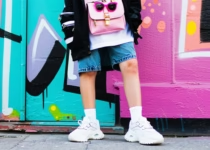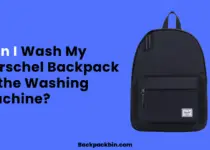How To Use Packing Cubes For Ultimate Luggage Organization

Picture this: you unzip your backpack at your destination and everything feels like a jumbled mess.
You’re rummaging through layers to find clean socks. Your tech cables are tangled at the bottom, and your favorite shirt is wrinkled.
Mastering how to use packing cubes for ultimate luggage organization is a game-changer, trust me.
In this step-by-step tutorial, you’ll learn how to choose, pack, and arrange cubes so your bag stays neat. You’ll find items easily and save space from top to bottom.
If you’re on a backpack only trip, check out our genius packing tricks for fitting everything in a backpack for more space savvy secrets.
Step 1: Choose Packing Cube Types
Picking the right cubes sets the foundation for tidy gear, easy access, and maximum space.
Pick the Right Sizes
Most sets come in small, medium, and large sizes. Here’s what to stash in each:
- Small cubes (8 × 5 × 2 inches): underwear, socks, and accessories
- Medium cubes (10 × 7 × 3 inches): t-shirts, shorts, light layers
- Large cubes (14 × 10 × 4 inches): pants, sweaters, jackets
Look for Durable Material
Opt for water resistant nylon or polyester. Mesh panels help you spot contents fast.
Check for reinforced stitching at the corners and smooth-gliding zippers.
Color-Code for Categories
Assign a color to each group—tops, bottoms, or undergarments—so you grab the right cube at a glance.
Add simple labels if you need extra clarity.
Ready to shop for the right cubes? Check out our affordable packing cube sets for minimalist travelers.
Step 2: Sort Items by Category
Sorting before you pack stops your cubes from turning into a random mess.
Group Similar Clothing
Bundle like-with-like so each cube has a clear purpose. For example:
- Shirts and blouses
- Pants and skirts
- Outer layers and sweatshirts
Separate Clean and Dirty
Keep worn items out of fresh clothes by dedicating one cube for dirty laundry.
For more tips, see best ways to separate clean and dirty clothes when traveling.
Tuck Toiletries Securely
Use a leakproof pouch or small cube for liquids, creams, and brushes.
For extra leak protection and space hacks, check how to pack toiletries to save space and avoid leaks.
Step 3: Fill Cubes Smartly
A few packing tricks can help you squeeze more into each cube.
Roll to Save Space
Tightly roll t-shirts, leggings, and socks to eliminate air pockets.
If you want the full breakdown, see how to roll vs fold clothes for maximum suitcase space.
Layer Delicate Items
Place tissue paper or a thin cloth between fragile pieces. Fold edges inward to shield buttons and seams.
Compress Bulky Gear
Fill corners first, then flatten the rest. If your cube has a compression zipper, use it to press out extra air.
Step 4: Position Cubes in Backpack
Strategic placement keeps your pack balanced and everything easy to reach.
Heaviest Cubes at Base
Lay denser cubes—like those with shoes or jeans—along the spine and toward the bottom. That keeps your center of gravity close to you.
Use Side Pockets
Slim cubes fit mesh side compartments perfectly. Save main space for larger organizers.
If you’re headed outdoors, our space-saving hacks for camping backpacks and gear offer more ideas.
Store Shoes Outward
Slip shoes into their own cube or bag and place them along the edges. That way dirt stays contained, and shoes don’t crush softer items.
Learn more in how to pack shoes without wasting suitcase space.
Step 5: Compress and Seal Cubes
Locking down cubes keeps them from shifting and expands your usable volume.
Use Compression Zippers
Close the primary zipper partway, adjust your contents, then zip the compression track tight.
Press Air Out
Smooth the cube’s surface with your palms to force out trapped air before sealing fully.
Check the Fit
Zip up your backpack, then unzip and adjust any bulges. A snug fit means no sliding or sagging mid-hike or mid-flight.
Step 6: Maintain Organization on the Go
Packing well is half the battle—keeping order finishes the job.
Unpack with Purpose
Only pull out what you need for the day, then leave the rest in its cube. That saves time each morning.
Refresh Cubes Daily
After wearing or washing an item, return it to its home cube. It stops stray socks from drifting under your laptop.
Repurpose Cubes at Destination
Use empty cubes as drawer dividers, snack bins, or beach gear holders. They’re handy beyond travel.
For carry-on only flights, check space-saving packing hacks for carry-on only travelers.
Frequently Asked Questions
How do I choose the right packing cube size?
Match cube dimensions to your gear. Small cubes work for undergarments, medium for shirts, large for bulkier layers.
Can packing cubes really save space?
Yes, by grouping items and removing air pockets you often gain 10–20 percent more room.
What’s the best way to compress packing cubes?
Fill the cube, close the main zipper, then zip the compression track. Press out air before sealing fully.
Are packing cubes machine washable?
Most are safe in cold water on a gentle cycle. Always air dry to protect mesh panels and zippers.
How do I keep cubes from popping open?
Choose cubes with lockable zippers or dual-pull sliders, and avoid overstuffing beyond recommended capacity.
Can I use packing cubes for electronics and chargers?
Absolutely, use smaller cubes or pouches to keep cables, adapters, and power banks tidy and tangle-free.
Should I mix packing cubes with compression bags?
You can. Use cubes for sorting and compression bags for very bulky items like jackets or blankets.
Final Packing Cube Recommendations
Packing cubes turn your backpack into a simple, efficient system. Start by choosing the right sizes, then sort and roll your items before filling each cube. Place heavier organizers near your spine, seal in the air, and make unpacking a breeze by refreshing cubes daily. By sticking to these steps, you’ll travel lighter, stay organized, and spend less time rifling through your bag.
Ready to upgrade your travel game? Grab a set of sturdy, water-resistant cubes, and enjoy the peace of mind that comes with ultimate luggage organization.


